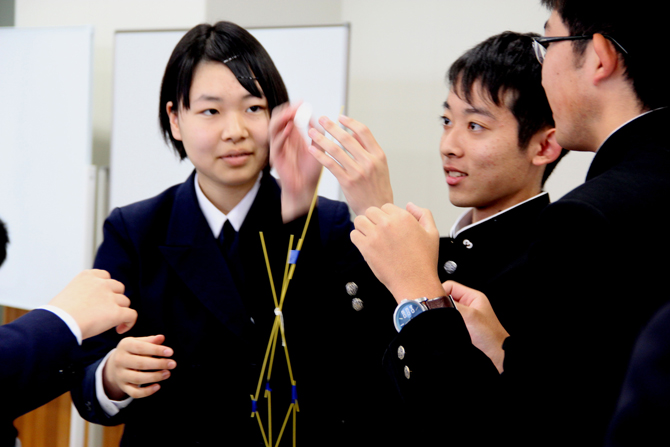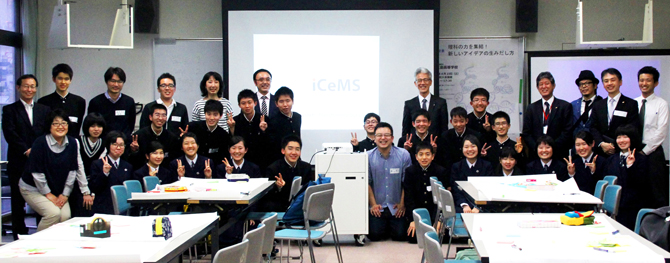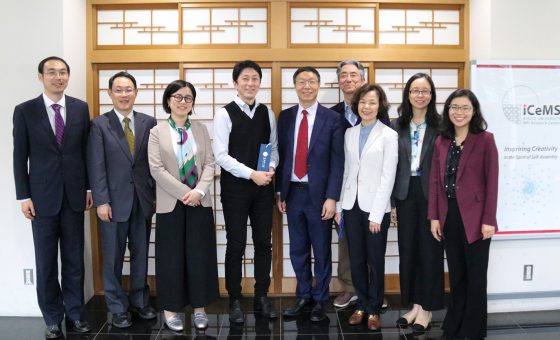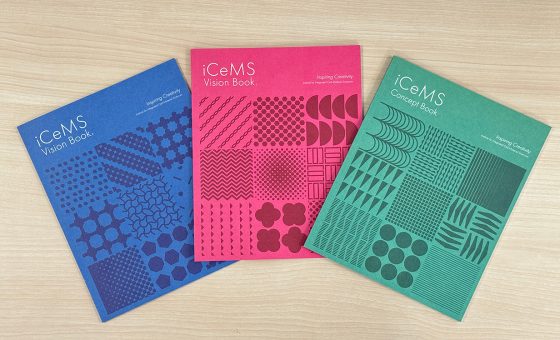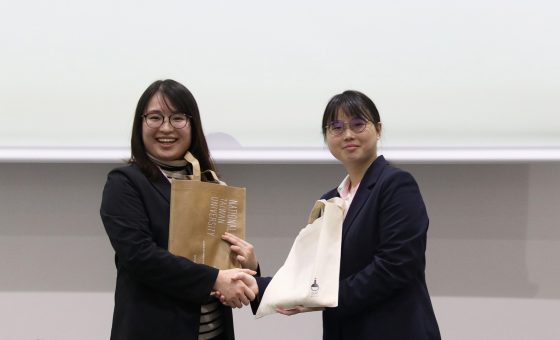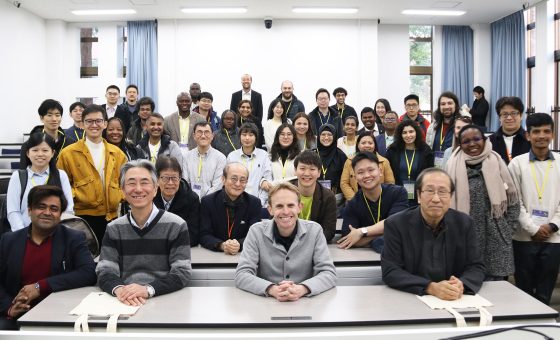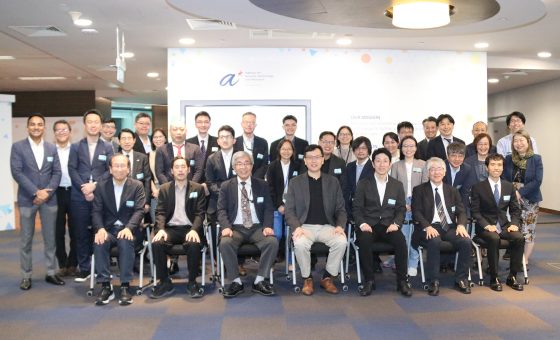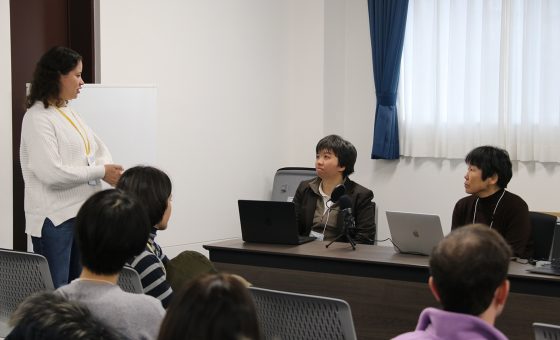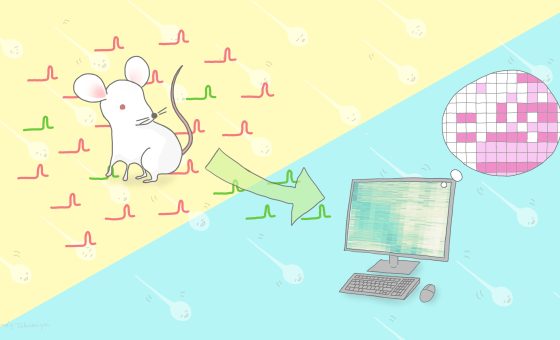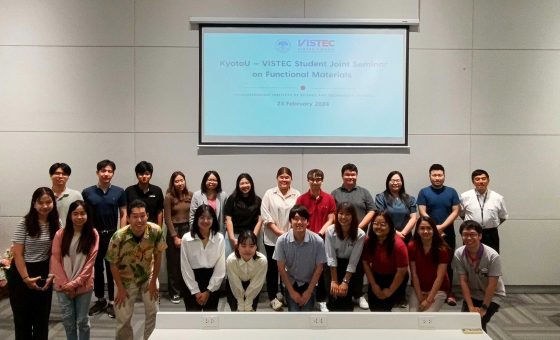Extension Lectures for High School Students: iCeMS Caravan’s “The Mechanism for Learning”
Media Coverage
Pictures
Kyoto University iCeMS’ young researchers Yousuke Katsuda, Kaoru Sugimura, Hideki Hirori, and Shuhei Furukawa conducted an active-learning style educational program for high school students called “The Mechanism for Learning.”
- April 16, 2016: Kyoto Gakuen Senior High School (20 students)
- April 23, 2016: Nagasaki Prefectural Goto High School (20 students)
Young iCeMS researchers work on interdisciplinary studies trying to communicate beyond borders between research fields such as cell biology, chemistry, chemical biology, and physics, experiencing the “importance of thinking by themselves, learning independently, and conveying their knowledge” on a daily basis. iCeMS Caravan project was first started based on the strong desire for high school students to experience these same things. iCeMS is providing two active learning-style lectures: the edX lecture, “The Chemistry of Life”*1, and the ILAS seminar, “When Chemistry Meets Biology”*2. By advancing the knowledge iCeMS has gained in these educational programs, iCeMS Caravan attempts to provide high school students a chance to experience the process of transforming knowledge into wisdom, creating ideas based on that wisdom, and conveying those ideas to other people, and feel the “mechanism for learning” that are hidden in this process.
At the beginning of each session of the iCeMS Caravan, the four researchers provided basic knowledge regarding the DNA and explained their latest research from the perspectives of a cell biologist, chemical biologist, chemist, and physicist. Over the course of the next five and half hours, the participating high school students engaged in and experienced the following progression: they organized the knowledge they had learned and subsequently created their own new ideas through group work, and give a presentation on the idea in an easy-to-understand manner corresponding with the structure of scientific manuscript. The students had numerous original ideas, and they stated, for example, that “I want to apply the DNA Origami technology to create a person who is resistant to illness or colds!” (Kyoto Gakuen High School), or that “we could preserve species by controlling their aging through the inhibition of telomerase activity” (Goto High School).
One student from Kyoto Gakuen High School said, “I learned the importance of creating one good piece of work by not only understanding something but also teaching it to other people and exchanging opinions with them” while another from Goto High School said, “I truly felt like studying isn’t something that I’m just forced to do; true learning starts from the feeling of something being ‘interesting’.” iCeMS Caravan project members hoped that “these iCeMS Caravan sessions would encourage high school students to consider the meaning of learning again and that it would be the impetus that they required to steer the helm of their lives under their own power.”
(For inquiries on iCeMS Caravan, e-mail the project team at caravan@icems.kyoto-u.ac.jp or call +81-774-38-3227)
*1 The edX lecture, “The Chemistry of Life,” is a Massive Open Online Course (MOOC) that was provided by Professor Motonari Uesugi. edX is unique in that it offers free lectures from world-class universities over the Internet. In addition, this project has conducted research on “how students learn” in both online and campus settings by developing an open source education platform and building a network among universities.
edX: https://www.icems.kyoto-u.ac.jp/en/about/education/edx/
*2 The ILAS (Institute for Liberal Arts and Sciences) Seminar, “When Chemistry Meets Biology,” was a lecture that was provided by iCeMS Associate Professor Shuhei Furukawa, Program-Specific Assistant Professor Kaoru Sugimura, Program-Specific Assistant Professor Masakazu Higuchi, and Program-Specific Assistant Professor Kazuto Fujishima. Each session highlighted different themes, such as energy production and evolution, and the iCeMS scientists introduced these themes from the perspectives of biology and chemistry. Then, the students engaged in a group discussion, and finally, they gave presentations regarding the “new research possibilities of combining chemistry and biology perspectives” in the scientific literature format. This program aims to assist students in acquiring an interdisciplinary perspective and the ability to form scientific logic by repeating this sequential process.
ILAS Seminar: https://www.icems.kyoto-u.ac.jp/en/about/education/ilas/
Media Coverage
- NHK Shiga [TV] “Bringing Cutting-Edge Science to Isolated Island” (May 31, 2016)
- NHK Kyoto [TV] “Appeal of Cutting-Edge Research Lectured to Young People” (May 27, 2016)
- NHK Osaka [TV] “Brining ‘Significance of Learning’ to Students on Isolated Island” (May 25, 2016)
- NHK Nagasaki [TV] “One-Day Class for Remote Island: Cutting-Edge Scientists’ Way of Thinking” (May 12, 2016)
- Fukue Cable Television the Fukue Channel [TV] “iCeMS Caravan” (April 27, 2016)
- Nagasaki Shinbun [newspaper] “Thinking about the Importance of Learning” (April 26, 2016)
Pictures

